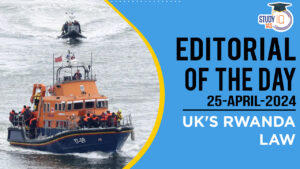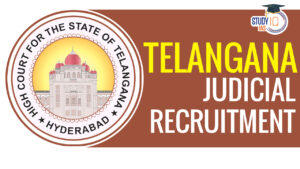Daily Current Affairs for UPSC 2023
Q) Which one of the following statements is not correct about Higgs Boson?
- It is the only elementary particle with no spin.
- The Higgs boson has a mass lower than protons.
- It comes into play when particles interact with each other.
- The Higgs boson can decay into a Z boson and a photon.
Daily Current Affairs for UPSC – 2 June April 2023
Explanation:
- Option (1) and (3) are correct: It is also charge less with zero spin, a quantum mechanical equivalent to angular momentum. The Higgs Boson is the only elementary particle with no spin. It’s a “force carrier” particle that comes into play when particles interact with each other, with a boson exchanged during this interaction.
- Option (2) is incorrect: Higgs Boson is the fundamental force-carrying particle associated with the Higgs field, a field that gives mass to other fundamental particles such as electrons and quarks. It is one of the 17 elementary particles that make up the Standard Model of particle physics, which is scientists’ best theory about the behaviors of the universe’s most basic building blocks. Higgs boson plays such a cardinal role in subatomic physics that it is sometimes referred to as the “God particle.” The Higgs boson has a mass of 125 billion electron volts, meaning it is 130 times more massive than a proton, according to CERN.
- Option (4) is correct: The European Organization for Nuclear Research (CERN), which hosts the Large Hadron Collider, (LHC), has announced that it has found the first evidence of the rare process by which the Higgs boson decays into a Z boson and a photon.
Q) Consider the following statements about Satellite communication:
- The radio signal broadcasted from the ground station is relayed by the geosynchronous satellites.
- The Defence Research and Development Organisation of India is responsible for auctioning satellite spectrum in India.
- The Satellite spectrum is unique to a country’s territorial limits.
How many of the statements given above is/are correct?
- Only one
- Only two
- All three
- None
Explanation:
- Statement 1 is correct: Satellite Service uses a geosynchronous satellite to relay the radio signal transmitted from the ground station. For communication signals, these satellites act as relay stations. From the earth station, the satellite accepts data/signals, amplifies them, and re-transmits them to another earth station. Data can be transmitted to the other side of the earth using such a setup in only one step.
- Statements 2 and 3 are incorrect: Recently, Telecom operators Reliance Jio and Vodafone Idea told the Telecom Regulatory Authority of India (TRAI) that satellite spectrum should be auctioned. Spectrum refers to the invisible radio frequencies that wireless signals travel over. Spectrum frequencies can be used for cellular communications; different bands have slightly different characteristics. Satellite Spectrum will make satellite broadband (communication) services operational in the country. Satellite spectrum has no national territorial limits and is coordinated by the International Telecommunications Union (ITU). It is subjected to their radio regulations to enable satellite networks to function without being impacted by harmful interference.
Q) With reference to Uniform Civil Code (UCC), consider the following statements:
- The provision of the UCC is included in the Directive Principles and is legally enforceable by the Court of Law.
- The B.N. Rau Committee was established by the British government to codify Hindu laws.
Which of the statements given above is/are correct?
- 1 only
- 2 only
- Both 1 and 2
- Neither 1 nor 2
Explanation:
- Statement 1 is incorrect but statement 2 is correct: The Law Commission has met the team of experts working on preparing a draft Uniform Civil Code for Uttarakhand. The idea of UCC can be traced back to colonial India when the British government submitted its report in 1835 stressing the need for uniformity in the codification of Indian law relating to crimes, evidence, and contracts. Increased number of legislations dealing with personal issues during the British rule forced the government to form the B N Rau Committee to codify Hindu law in 1941. The 1937 Act was reviewed, and the committee recommended a civil code of marriage and succession for Hindus, giving equal rights to women. After independence, the Uniform Civil Code (UCC) was included in the Directive Principles and is not enforceable by the Court of Law. Article 44 of the constitution (DPSP) says that the “State shall endeavour to provide for its citizens a uniform civil code (UCC) throughout the territory of India.” Dr B.R. Ambedkar’s opinion was that a UCC is desirable but for the moment should remain voluntary. It can be implemented when the nation would be ready to accept it and the social acceptance to UCC is achieved.
Q) Consider the following statements about ‘KAVACH’ system:
- It is an indigenously developed automatic train protection system designed by the Defence Research and Development Organization.
- Radio Frequency Identification Device technology is installed in the locomotives as well as the signalling system.
- In case the driver doesn’t regulate the train’s speed, Kavach automatically engages the train’s braking system.
How many of the statements given above is/are correct?
- Only one
- Only two
- All three
- None
Explanation:
- Statement 1 is incorrect but statement 2 is correct: KAVACH System is an indigenously developed Automatic Train Protection (ATP) system by Research Design and Standards Organization (RDSO) in collaboration with Indian industry. It is a set of electronic devices and Radio Frequency Identification devices (RFID) installed in locomotives, in the signaling system as well the tracks that talk to each other using ultra high radio frequencies to control the brakes of trains and also alert drivers, all based on the logic programmed into them.
- Statement 3 is correct: It is meant to provide protection by preventing trains from passing the signal at Danger (Red) and avoiding collision. It activates the train braking system automatically if the driver fails to control the train as per the speed restrictions. In addition, it prevents collisions between two Locomotives equipped with a functional KAVACH system. It is one of the cheapest; Safety Integrity Level 4 (SIL-4) certified a technology with the probability of error is 1 in 10,000 years. However, as per a statement of the Railways, KAVACH was not available on this route.
Q) With reference to Strategic Petroleum Reserves (SPR), consider the following statements:
- India’s strategic oil reserves are managed by the private petroleum companies.
- Recently, a salt cavern-based strategic oil reserve was built in Maharashtra.
- The International Energy Agency recommends that all countries to hold emergency oil stockpile of Six months.
Which of the statements given above is/are not correct?
- 1 and 2 only
- 2 and 3 only
- 3 only
- 1, 2 and 3
Explanation:
- Statement 1 is incorrect: Strategic Petroleum Reserves are stockpiles of crude oil maintained by countries for release in the event of a supply disruption. It aims to ensure energy security of the country by serving as a cushion during any external supply disruptions. India’s strategic oil reserves come under the Petroleum Ministry’s special purpose vehicle Indian Strategic Petroleum Reserve (ISPRL).
- Statement 2 is incorrect: Engineers India (EIL) is studying the prospects and feasibility of developing salt cavern-based strategic oil reserves in Rajasthan. It would be first salt cavern-based oil storage facility in India. India’s three existing strategic oil storage facilities, at Mangaluru and Padur in Karnataka and Visakhapatnam in Andhra Pradesh, are made up of excavated rock caverns. Salt cavern-based storage is considered cheaper and less labour- and cost-intensive than rock caverns.
- Statement 3 is incorrect: The International Energy Agency (IEA) recommends that all countries should hold an emergency oil stockpile sufficient to provide 90 days of import protection. In India, apart from the SPR, the oil marketing companies (OMCs) have storage facilities for crude oil and petroleum products for 64.5 days, which means there is sufficient storage to meet around 74 days of the country’s petroleum demand.


 Current Affairs 25th April 2024 for UPSC...
Current Affairs 25th April 2024 for UPSC...
 Editorial of the day (25th Apr): UK's Rw...
Editorial of the day (25th Apr): UK's Rw...
 Telangana Judicial Recruitment Notificat...
Telangana Judicial Recruitment Notificat...

















